- Clone
- 2H7 (See other available formats)
- Regulatory Status
- RUO
- Workshop
- IV B201
- Other Names
- B1, Bp35
- Isotype
- Mouse IgG2b, κ
- Ave. Rating
- Submit a Review
- Product Citations
- publications
CD20 is a 33-37 kD, four transmembrane spanning protein, also known as B1 and Bp35. CD20 is expressed on pre-B-cells, resting and activated B cells (not plasma cells), some follicular dendritic cells, and at low levels on a T cell subset. CD20 is heavily phosphorylated on activated B cells and malignant B cells. Homo-oligomeric complexes of CD20 are thought to form Ca2+ conductive ion channels in the plasma membrane of B cells. The CD20 molecule is involved in B-cell activation and is associated with various Src family kinases (Lyn, Lck, Fyn). It exists in a complex with MHC class I and II, CD53, CD81, and CD82.
Product DetailsProduct Details
- Verified Reactivity
- Human, Cynomolgus, Rhesus
- Reported Reactivity
- Baboon, Capuchin Monkey, Chimpanzee, Pigtailed Macaque, Squirrel Monkey
- Antibody Type
- Monoclonal
- Host Species
- Mouse
- Immunogen
- Human tonsillar B cells
- Formulation
- Phosphate-buffered solution, pH 7.2, containing 0.09% sodium azide
- Preparation
- The antibody was purified by affinity chromatography and conjugated with Spark Blue™ 550 under optimal conditions.
- Concentration
- 0.2 mg/mL
- Storage & Handling
- The antibody solution should be stored undiluted between 2°C and 8°C, and protected from prolonged exposure to light. Do not freeze.
- Application
-
FC
- Recommended Usage
-
Flexi-Fluors™ are provided at a standard 0.2 mg/mL concentration. We recommend titrating this reagent to determine the optimal concentration for each application. For many flow cytometry applications, conjugated antibodies perform well at concentrations ranging from 0.03 to 1.0 µg per million cells in 100 µL. We recommend testing a range of concentrations starting from 10 µg/mL.
For example, make five 1:1 serial dilutions of the 0.2 mg/mL antibody. Add 5 µL of each dilution (including the undiluted antibody) to 100 µL of cells (at 107 cells/mL) to test six concentrations -- 1.0, 0.5, 0.25, 0.125, 0.06, and 0.03 µg per million cells in 100 µL volume. Compare staining patterns or create a titration curve using the MFI or staining index to determine the optimal concentration.
* Spark Blue™ 550 has a maximum excitation of 516 nm and a maximum emission of 540 nm. - Excitation Laser
-
Blue Laser (488 nm)
- Application Notes
-
The epitope recognized by clone 2H7 has been mapped to the sequence YNCEPANPSEKNSPST which lies in the large extracellular loop of human CD20. Additional reported applications (for the relevant formats) include: immunoprecipitation4 and immunohistochemical staining of acetone-fixed frozen sections5.
- Additional Product Notes
-
For more information about Flexi-Fluors™, visit our Flexi-Fluor™ page and review FAQs associated with this product line.
- Application References
-
- Schlossman S, et al. 1995. Leucocyte Typing V. Oxford University Press. New York.
- Knapp W, et al. 1989. Leucocyte Typing IV. Oxford University Press. New York.
- McMichael A, et al. Eds. 1987. Leucocyte Typing III Oxford University Press. New York.
- Polyak MJ, et al. 2002. Blood 99:3256. (IP)
- Mack CL, et al. 2004. Pediatr. Res. 56:79. (IHC)
- RRID
-
AB_3106273 (BioLegend Cat. No. 285006)
Antigen Details
- Structure
- Four transmembrane protein (TM4SF), heavily phosphorylated after activation, 33-37 kD
- Distribution
-
B cell, T cell subsets
- Function
- B cell activation
- Ligand/Receptor
- Src family tyrosine kinases, MHC class I, II, CD53, CD81, CD82
- Cell Type
- B cells, T cells
- Biology Area
- Costimulatory Molecules, Immunology
- Molecular Family
- CD Molecules
- Antigen References
-
1. Hultin L, et al. 1993. Cytometry 14:196.
2. Tedder T, et al. 1994. Immunol. Today 15:450. - Gene ID
- 931 View all products for this Gene ID
- UniProt
- View information about CD20 on UniProt.org
Related FAQs
- What is the difference between two anti human CD20 clones 2H7 and 1412?
-
For clone 1412: This clone specifically recognizes cytoplasmic domain of CD20 and thus can only be used for intracellular flow cytometry. In this instance you will need to include the fixation and permeabilization steps. Please follow the intracellular flow cytometry staining protocol.
For clone 2H7: This clone is ok for regular surface staining for CD20 and there is no need for any fixation and permeabilization steps.
Our technical protocols can be found here. - What are Flexi-Fluors?
-
Flexi-Fluors are rapidly made-to-order conjugated antibodies. The technology, manufacturing processes, and specifications used to create Flexi-Fluors are the same as our regular catalog products. However, the optimal concentration and performance of each Flexi-Fluor must be determined by the customer.
- How quickly will I receive my order?
-
We aim to ship Flexi-Fluors within 2-3 weeks of receipt of your order. However, depending on your location, shipping times may vary.
- How are Flexi-Fluors different from regular catalog products?
-
Flexi-Fluors are made on demand, specifically for you. Flexi-Fluors are manufactured using the same high-quality standards, and specifications as other catalog products. For faster delivery, Flexi-Fluors are not tested by flow cytometry to determine optimal concentrations or evaluate performance. This testing needs to be performed by the customer.
- How do I determine the optimal concentration for using my Flexi-Fluor? How should I titrate my antibody?
-
Flexi-Fluors are provided at a standard 0.2 mg/mL concentration. We recommend that you titrate your antibody to determine the optimal concentration to use for your application. For many flow cytometry applications, conjugated antibodies perform well at concentrations ranging from 0.03 to 1.0 µg per million cells in 100 µL volume. We recommend that you test a range of concentrations starting from 10 µg/mL.
For example, make five 1:1 serial dilutions of your 0.2 mg/mL antibody. Add 5 µL of each dilution (including the undiluted antibody) to 100 µL of cells (at 107 cells/ml) to test six concentrations - 1.0, 0.5, 0.25, 0.125, 0.06, and 0.03 µg per million cells in 100 µL volume. Compare staining patterns or create a titration curve using the MFI or staining index to determine the optimal concentration.
- I can’t find the antibody-dye combination that I need. When will it be available?
-
We continuously update our catalog, introducing scores of new products every month. Please get in touch with our Technical Service team for an update on new products or recommendations for suitable alternatives to complete your panel. Or contact Custom Solutions to inquire about our affordable custom conjugation services.
- I need help to validate the performance of my Flexi-Fluor. Who should I contact?
-
Please get in touch with Technical Service for assistance.
- Can I order more than 50 μg of a Flexi-Fluor?
-
Yes, you can order multiple vials of the same Flexi-Fluor products. We cannot guarantee, however, that these vials will be bottled from the same lot. For bulk single-lot orders, contact our Custom Solutions team.
- What is the expiration date of my Flexi-Fluor?
-
Expiration dates can be found on the vial label or by using our CoA lookup tool.
Other Formats
View All CD20 Reagents Request Custom ConjugationCompare Data Across All Formats
This data display is provided for general comparisons between formats.
Your actual data may vary due to variations in samples, target cells, instruments and their settings, staining conditions, and other factors.
If you need assistance with selecting the best format contact our expert technical support team.
-
APC anti-human CD20

Human peripheral blood lymphocytes were stained with anti-CD... -
FITC anti-human CD20

Human peripheral blood lymphocytes were stained with anti-CD... -
PE anti-human CD20
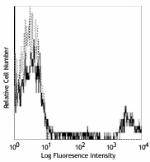
Human peripheral blood lymphocytes were stained with anti-CD... -
PE/Cyanine5 anti-human CD20
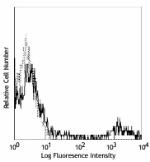
Human peripheral blood lymphocytes were stained with anti-CD... -
Purified anti-human CD20
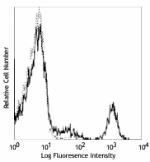
Human peripheral blood lymphocytes were stained with purifie... 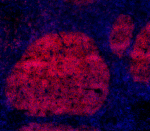
Human frozen tonsil section was fixed with 4% paraformaldehy... -
APC/Cyanine7 anti-human CD20

Human peripheral blood lymphocytes were stained with anti-CD... -
PE/Cyanine7 anti-human CD20
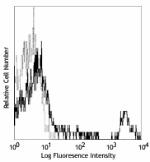
Human peripheral blood lymphocytes were stained with anti-CD... -
Alexa Fluor® 488 anti-human CD20
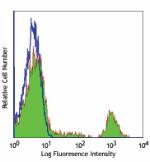
Human peripheral blood lymphocytes were stained with anti-CD... 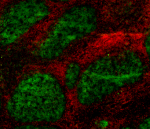
Human frozen tonsil section was fixed with 4% paraformaldehy... -
Alexa Fluor® 647 anti-human CD20
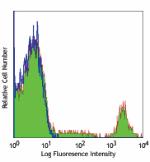
Human peripheral blood lymphocytes were stained with anti-CD... 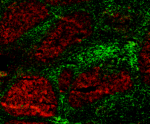
Human frozen tonsil section was fixed with 4% paraformaldehy... -
Pacific Blue™ anti-human CD20
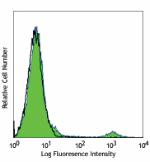
Human peripheral blood lymphocytes were stained with anti-CD... -
Alexa Fluor® 700 anti-human CD20
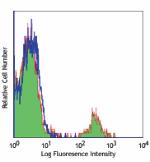
Human peripheral blood lymphocytes were stained with anti-CD... -
PerCP anti-human CD20
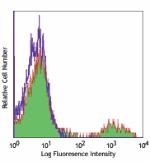
Human peripheral blood lymphocytes were stained with anti-CD... -
PerCP/Cyanine5.5 anti-human CD20

Human peripheral blood lymphocytes were stained with CD19 AP... -
Brilliant Violet 421™ anti-human CD20

Human peripheral blood lymphocytes were stained with CD19 PE... 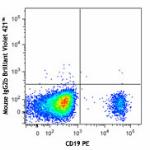
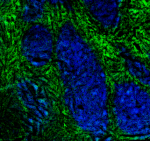
Human frozen tonsil section was fixed with 4% paraformaldehy... -
Brilliant Violet 570™ anti-human CD20
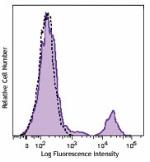
Human peripheral blood lymphocytes were stained with CD20 (c... -
Brilliant Violet 605™ anti-human CD20

Human peripheral blood lymphocytes were stained with CD20 (c... -
Brilliant Violet 650™ anti-human CD20
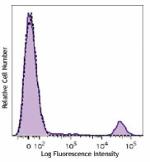
Human peripheral blood lymphocytes were stained with CD20 (c... -
Brilliant Violet 785™ anti-human CD20
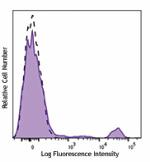
Human peripheral blood lymphocytes were stained with CD20 (c... -
Brilliant Violet 510™ anti-human CD20

Human peripheral blood lymphocytes were stained with CD20 (c... -
Brilliant Violet 711™ anti-human CD20
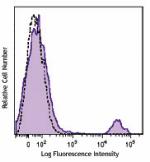
Human peripheral blood lymphocytes were stained with CD20 (c... -
Purified anti-human CD20 (Maxpar® Ready)
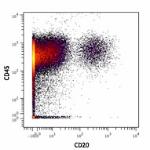
Human PBMCs stained with 154Sm-anti-CD45 (HI30) and 147m-ant... -
PE/Dazzle™ 594 anti-human CD20
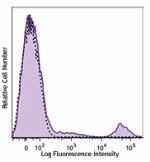
Human peripheral blood lymphocytes were stained with CD20 PE... -
Biotin anti-human CD20
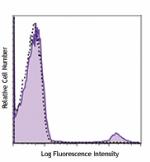
Human peripheral blood lymphocytes were stained with biotiny... -
APC/Fire™ 750 anti-human CD20
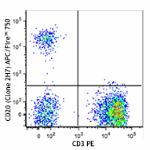
Human peripheral blood lymphocytes were stained with CD3 PE ... 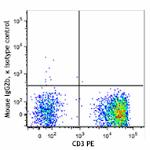
-
Alexa Fluor® 594 anti-human CD20
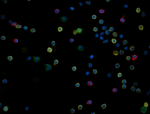
Human peripheral blood mononuclear cells were fixed with 2% ... 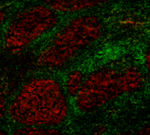
Human frozen tonsil section was fixed with 4% paraformaldehy... -
FITC anti-human CD20
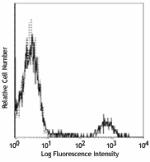
Typical results from human peripheral blood lymphocytes stai... -
Pacific Blue™ anti-human CD20
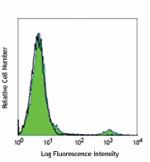
Typical results from human peripheral blood lymphocytes stai... -
APC anti-human CD20

Typical results from human peripheral blood lymphocytes stai... -
PE/Cyanine7 anti-human CD20

Typical results from human peripheral blood lymphocytes stai... -
TotalSeq™-A0100 anti-human CD20
-
TotalSeq™-B0100 anti-human CD20
-
TotalSeq™-C0100 anti-human CD20
-
PerCP/Cyanine5.5 anti-human CD20
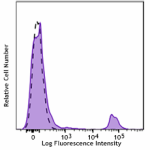
Typical results from human peripheral blood lymphocytes stai... -
Spark NIR™ 685 anti-human CD20

Human peripheral blood lymphocytes were stained with CD19 Br... -
Spark YG™ 593 anti-human CD20

Human peripheral blood lymphocytes were stained with CD19 Al... -
GMP FITC anti-human CD20
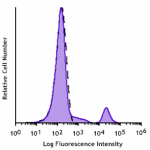
Typical results from human peripheral blood lymphocytes stai... -
TotalSeq™-D0100 anti-human CD20
-
GMP APC anti-human CD20
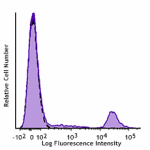
Typical results from human peripheral blood lymphocytes stai... -
Spark Violet™ 500 anti-human CD20

Human peripheral blood lymphocytes were stained with anti-hu... -
GMP Pacific Blue™ anti-human CD20
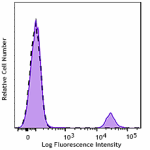
Typical results from human peripheral blood lymphocytes stai... -
GMP PerCP/Cyanine5.5 anti-human CD20

Typical results from human peripheral blood lymphocytes stai... -
Spark Violet™ 538 anti-human CD20

Human peripheral blood lymphocytes were stained with anti-hu... -
APC/Fire™ 750 anti-human CD20
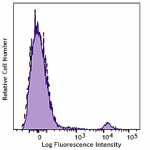
Typical results from human peripheral blood lymphocytes stai... -
PE anti-human CD20
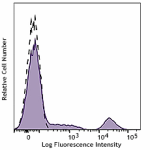
Typical results from Human peripheral blood lymphocytes stai... -
GMP PE/Cyanine7 anti-human CD20

Typical results from human peripheral blood lymphocytes stai... -
Spark Blue™ 515 anti-human CD20

Human peripheral blood lymphocytes were stained with anti-hu... -
GMP APC/Fire™ 750 anti-human CD20
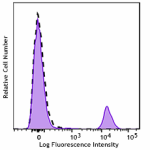
Typical results from human peripheral blood lymphocytes stai... -
GMP PE anti-human CD20

Typical results from human peripheral blood lymphocytes stai... -
Spark Blue™ 550 anti-human CD20 (Flexi-Fluor™)
-
Spark Blue™ 574 anti-human CD20 (Flexi-Fluor™)
-
Spark Red™ 718 anti-human CD20 (Flexi-Fluor™)
-
Brilliant Violet 750™ anti-human CD20

Human peripheral blood lymphocytes were stained with anti-hu... -
APC/Fire™ 810 anti-human CD20

Human peripheral blood lymphocytes were stained with anti-hu... -
Alexa Fluor® 660 anti-human CD20

Human peripheral blood lymphocytes were stained with anti-hu...
 Login / Register
Login / Register 













Follow Us